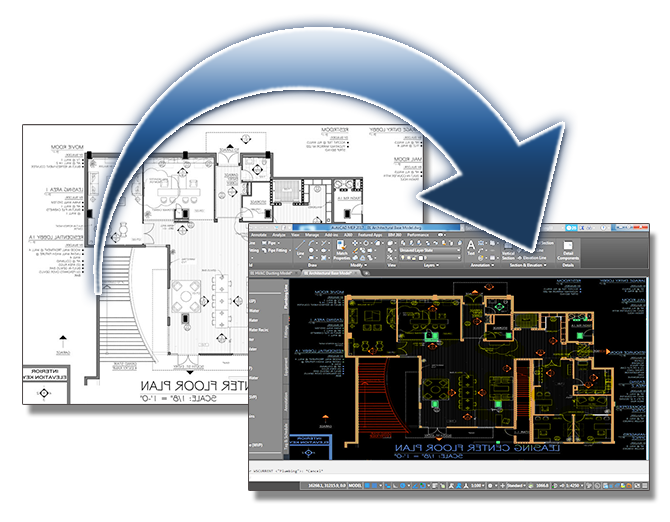Blueprints to CAD Conversion: Evolution of Design Processes
Posted by Constantin Iancu on
Blueprints to CAD conversion has experienced a remarkable evolution in its process, moving from traditional blueprint methods to the widespread adoption of Computer-Aided Design (CAD) systems. This shift has revolutionized the way designers create and develop their projects, enabling them to work more efficiently and produce higher quality designs. In this article, we will explore the historical evolution of design processes, emphasizing the transition from blueprints to CAD and the advantages it brings.
Traditional Blueprint Methods
Before the advent of CAD, design processes heavily relied on traditional blueprint methods. Architects and engineers would meticulously create detailed drawings by hand, using pencil and paper. These intricate blueprints served as the foundation for various construction projects, providing a visual representation of the design and guiding professionals throughout the entire construction process.
While traditional blueprints were effective, they had their limitations. Creating intricate designs manually was time-consuming and prone to human errors. Making changes or modifications to the design required significant effort and often resulted in the entire blueprint being redrawn. As projects became more complex, the demand for a more efficient and accurate design process grew.
The Rise of Computer-Aided Design (CAD)
In the late 1960s and early 1970s, Computer-Aided Design (CAD) systems emerged as a groundbreaking solution to the challenges faced by traditional blueprint methods. CAD software allowed designers to create, modify, and visualize designs using computers. This new technology revolutionized the design process, offering a myriad of benefits that greatly enhanced productivity and accuracy.
CAD systems eliminated the need for manual drafting, enabling designers to create precise designs digitally. With CAD, professionals could easily make changes to the design, as modifications could be made effortlessly without redrawing the entire blueprint. The ability to visualize the design in 3D further aided in better comprehension and communication of the project.
Advantages of CAD
Blueprints to CAD conversion brought numerous advantages to the design industry. Firstly, CAD systems allowed for increased productivity and efficiency. Designers could produce detailed designs in a significantly shorter amount of time, reducing the overall project timeline. The digital nature of CAD designs also facilitated effortless sharing and collaboration, eliminating the need for physical documents.
Furthermore, the accuracy and precision offered by CAD systems greatly minimized errors and inconsistencies in the design. The ability to simulate real-world conditions and use automated tools for calculations and measurements enhanced the quality of the final design, resulting in better construction outcomes and reduced costs due to reworks.
Conclusion
The evolution of design processes from traditional blueprints to CAD using blueprints to CAD conversion has had a transformative impact on the industry. CAD systems have revolutionized the way designers create and develop projects, significantly improving productivity, accuracy, and overall design quality. As technology continues to advance, it is exciting to envision the future possibilities that will further shape and enhance the design process.

